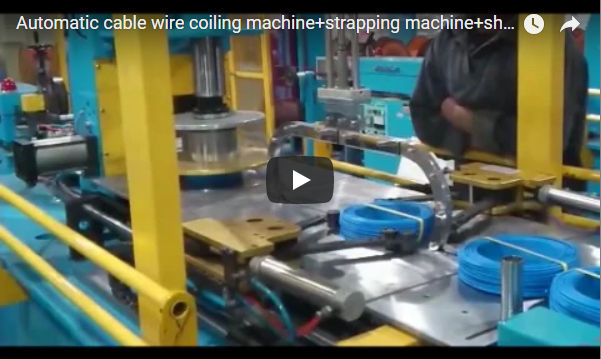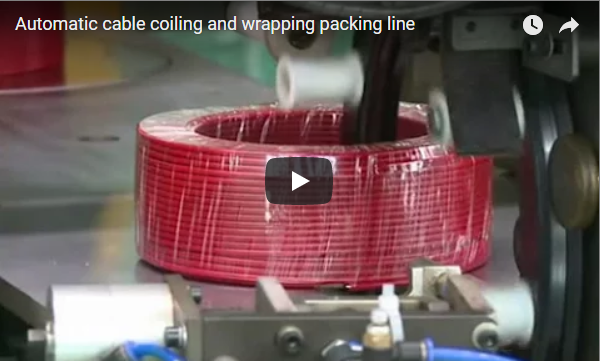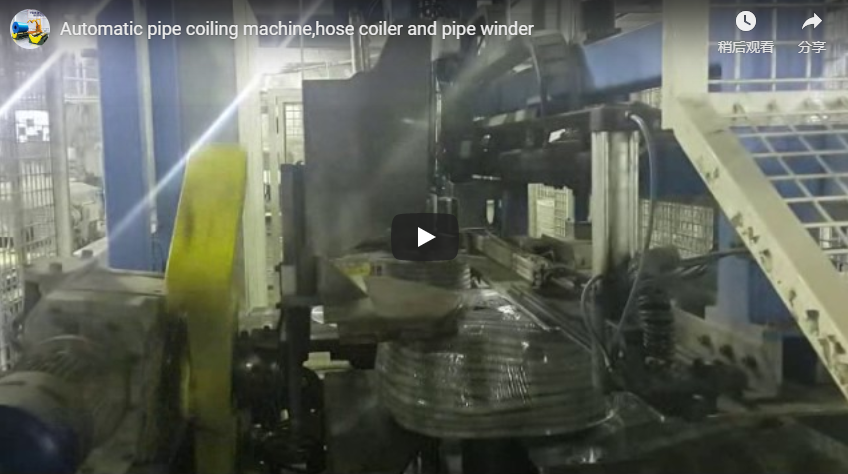Streamlining Cable Production: An In-Depth Look at Automatic Coiling, Wrapping, Strapping, and Shrinking Systems
In today's demanding manufacturing environment, efficiency and consistency are paramount, especially in cable and wire production. Manual handling and packaging processes often create bottlenecks, increase labor costs, and introduce variability in package quality. Integrated automatic packaging systems offer a robust solution, seamlessly transforming finished cable into securely packaged coils ready for shipment. Let's delve into the mechanics, operational benefits, and practical considerations of a typical automated line featuring coiling, wrapping, strapping, and shrinking modules.
Video Courtesy: Fhope demonstrating an integrated automatic cable packaging line.
As a provider in this space, Fhope showcases systems designed to consolidate these crucial packaging steps. Understanding how each stage functions provides insight into the value such automation brings to a fabrication or manufacturing floor.
1. The Challenge: Manual Cable Packaging Inefficiencies
Before exploring the automated solution, it's worth acknowledging the limitations of traditional methods. Manual coiling can lead to inconsistent coil dimensions and tension. Subsequent wrapping, strapping, and handling steps are labor-intensive, prone to ergonomic risks, and can result in packaging failures or product damage during transit. Achieving high throughput consistently is a significant challenge.
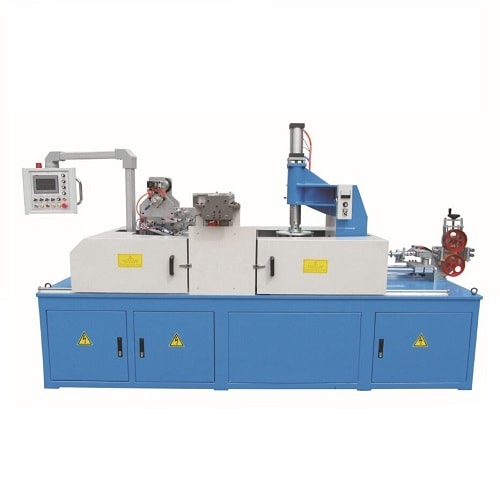
2. Anatomy of an Automated Cable Packaging Line
An integrated system links several specialized machines, ensuring smooth material flow and synchronized operation, often managed by a central PLC (Programmable Logic Controller).
2.1. Precision Automatic Coiling Machine
This is the starting point. Cable directly from the production line or a payoff is fed into the coiler.
- Function: Winds the cable into neat, specified coils.
- Technical Aspects:
- Programmable Length: Precisely measures cable length using encoders for consistent coil sizes.
- Adjustable Core Diameter: Accommodates different coil specifications.
- Traverse Winding: Ensures even layering of the cable within the coil using a synchronized traverse mechanism.
- Tension Control: Maintains consistent tension during winding to prevent cable damage and ensure a tight coil.
- Automatic Cut & Clamp: Once the desired length is reached, the cable is automatically cut, and the end is secured.
- Operator Insight: Setup typically involves inputting parameters like desired length, cable diameter, and coil dimensions via an HMI (Human-Machine Interface). Sensor monitoring helps detect faults early.
2.2. Protective Wrapping Station
Once coiled, the cable package moves to the wrapping station.
- Function: Applies a protective layer around the coil's circumference.
- Technical Aspects:
- Orbital Wrapping: The wrapping material (e.g., stretch film, PE film, paper, or VCI film for corrosion protection) is carried on a shuttle that rotates around the coil as it passes through.
- Adjustable Overlap: Allows control over the amount of film overlap for varying levels of protection and stability.
- Film Tensioning: Ensures a tight, secure wrap.
- Benefit: Protects against dust, moisture, and minor abrasions during handling and storage. Unitizes the coil.
2.3. Secure Strapping Application
To further enhance coil integrity and handling ease, strapping is applied.
- Function: Applies one or more straps radially around the wrapped coil.
- Technical Aspects:
- Strap Types: Typically uses Polypropylene (PP) or Polyester (PET) strapping.
- Automatic Feeding & Tensioning: Feeds the strap around the coil, pulls it to the pre-set tension.
- Sealing Method: Usually employs heat sealing or friction welding for a secure joint.
- Multiple Straps: Can be programmed to apply multiple straps at defined positions.
- Benefit: Prevents the coil from unwinding or loosening, especially important for larger or heavier coils. Facilitates easier handling by forklifts or cranes.
2.4. Final Shrink Tunnel (Optional but Recommended)
The final stage for achieving a highly professional and protected package.
- Function: Applies heat to shrink a pre-applied or integrated shrink film tightly around the coil.
- Technical Aspects:
- Controlled Heat Application: Uses heated air circulated within an insulated tunnel. Temperature and airflow are carefully controlled to match the film type and product.
- Conveyor System: Transports the coil through the tunnel at a consistent speed for uniform shrinking.
- Shrink Film: Typically Low-Density Polyethylene (LDPE) based films.
- Benefit: Creates a conformal, tamper-evident package that offers excellent protection against environmental factors (moisture, dirt) and further enhances load stability. Provides a clean, professional appearance.
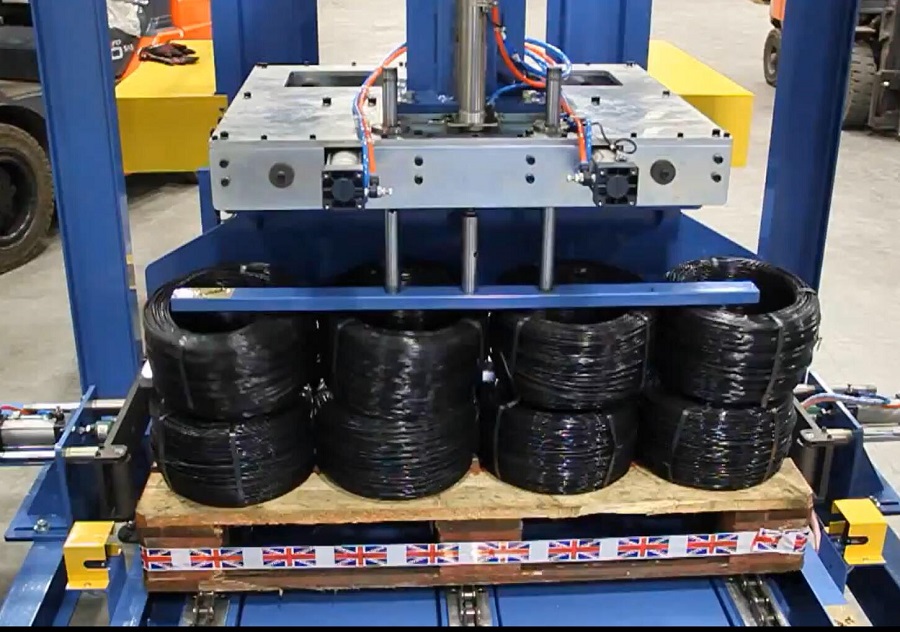
3. Tangible Benefits on the Shop Floor
Implementing such an automated system, like the ones offered by Fhope, translates directly into operational advantages:
- Increased Throughput: Dramatically speeds up the packaging process compared to manual methods, aligning packaging capacity with production output.
- Reduced Labor Costs: Automates repetitive tasks, allowing personnel to be redeployed to more complex or value-added activities.
- Improved Consistency & Quality: Ensures every coil is packaged to the same standard, reducing variability and enhancing brand perception.
- Enhanced Product Protection: Minimizes damage during handling, storage, and shipping, leading to fewer returns and customer complaints.
- Better Safety: Reduces manual lifting and handling, mitigating ergonomic risks for operators.
- Data Integration: Modern systems can often provide production data (coils packed, lengths, faults) that can be integrated into plant monitoring systems (MES/SCADA).
4. Key Considerations for Implementation
While the benefits are clear, successful integration requires planning:
- Line Integration: How will the system interface with upstream (extrusion, testing) and downstream (palletizing, warehousing) processes?
- Product Range: Ensure the system's specifications (cable diameter range, max/min coil size, weight capacity) match your product mix.
- Material Handling: Consider efficient coil transfer between stations and removal from the line.
- Maintenance: Understand the preventative maintenance schedule and availability of spare parts.
- Operator Training: Ensure staff are properly trained on operation, parameter setting, and basic troubleshooting.
- Footprint & Utilities: Allocate sufficient floor space and ensure adequate power and compressed air supply.
5. Fhope's Integrated Solution
The system highlighted in the video exemplifies how these stages can be combined into a single, efficient production flow. Fhope provides solutions tailored to specific cable types and production volumes, integrating these core functions – coiling, wrapping, strapping, and shrinking – into reliable automated lines.
For more details on specific configurations like automatic cable coiling and wrapping machines, you can explore further technical specifications:
https://www.fhopepack.com/Cable-packing-machine/Automatic-Cable-coiling-and-wrapping-mac.html
Conclusion
Automating cable wire coil packaging is no longer a luxury but a strategic necessity for manufacturers aiming for higher efficiency, consistent quality, and improved profitability. By integrating precision coiling, protective wrapping, secure strapping, and optional shrink wrapping, companies can transform their end-of-line operations, ensuring their products reach customers securely and professionally packaged. Evaluating systems based on technical capability, integration potential, and operational benefits is key to making a sound investment in this essential technology.
For inquiries or specific application discussions, you can reach out:
info@fhopepack.com


